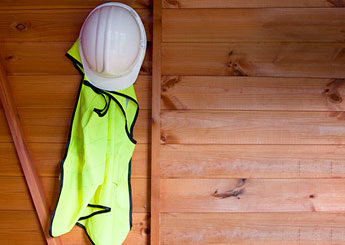Falls remain among deadliest hazards for workers: study

Photo: Design Pics/Thinkstock
Morgantown, WV — Falls are the second-leading cause of work-related deaths in the United States, representing 14 percent of all worker fatalities over an 11-year period, according to a recent study from NIOSH.
Researchers identified fatal falls in the Census of Fatal Occupational Injuries and gauged rates across different occupations and groups of workers by using population estimates from the Current Population Survey.
From 2003 to 2014, 8,880 workers died from falls for an annual rate of 5.5 per 1 million full-time equivalent workers. Jobs with the highest fatal fall rates were construction and extraction (42.2) and installation, maintenance and repair (12.5).
Falls to a lower level resulted in 7,521 deaths (84.7 percent) compared to 1,128 (12.7 percent) from falls on the same level and 231 (2.6 percent) from “all other types of falls.”
Fall rates were higher among men and Hispanic and older workers. Nearly half – 45 percent – of fatal falls to a lower level occurred among workers in organizations with 10 or fewer employees.
The researchers cite guidelines for employers from the National Fall Prevention Campaign – a collaboration of NIOSH, OSHA and the Center for Construction Research and Training (also known as CPWR). The guidelines:
- Plan ahead to reduce or remove fall hazards, if possible.
- Provide appropriate equipment when employees are working at heights of 6 feet or more.
- Educate workers on fall hazards and the proper use of safety equipment.
“Prevention of work-related falls remains a challenge among U.S. workers, and our results indicate that work-related falls continue to be a problem, especially among certain worker groups,” the researchers said. “The lack of a substantial decrease in rates of fatal work-related falls suggests a continued need for collaboration of regulators and industry leaders, professional associations and labor unions, employers and employees, safety professionals and researchers.”
The study was published in the March issue of the American Journal of Industrial Medicine.
Post a comment to this article
Safety+Health welcomes comments that promote respectful dialogue. Please stay on topic. Comments that contain personal attacks, profanity or abusive language – or those aggressively promoting products or services – will be removed. We reserve the right to determine which comments violate our comment policy. (Anonymous comments are welcome; merely skip the “name” field in the comment box. An email address is required but will not be included with your comment.)

